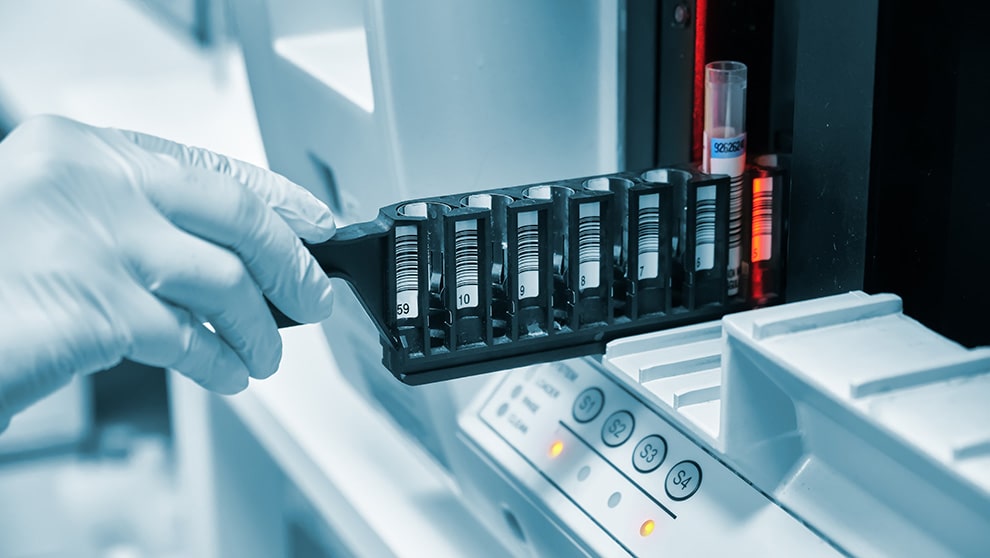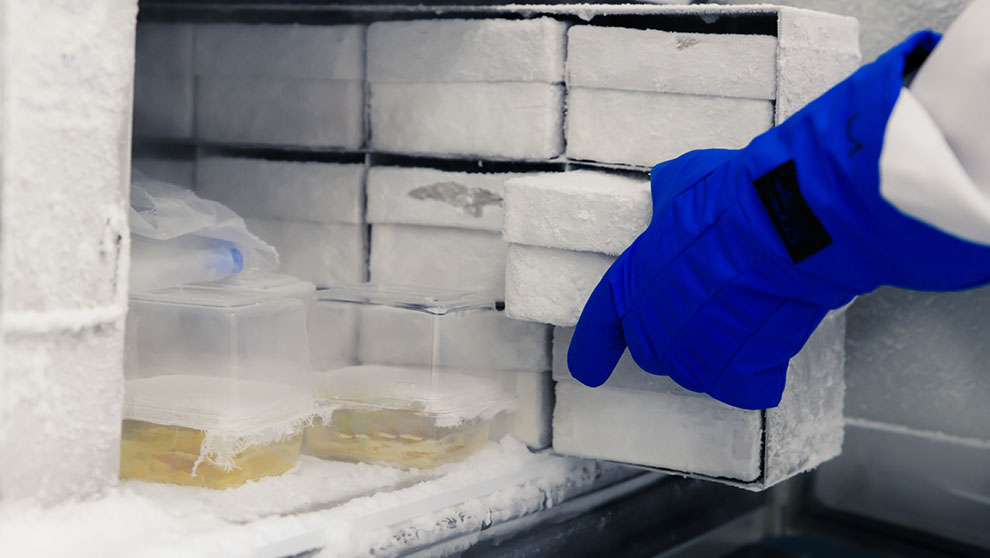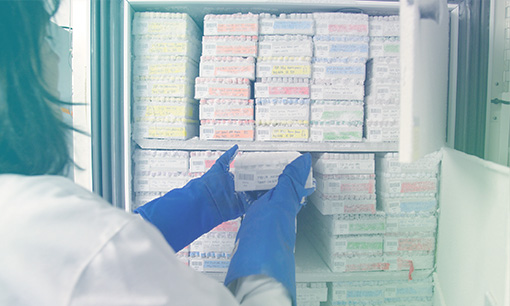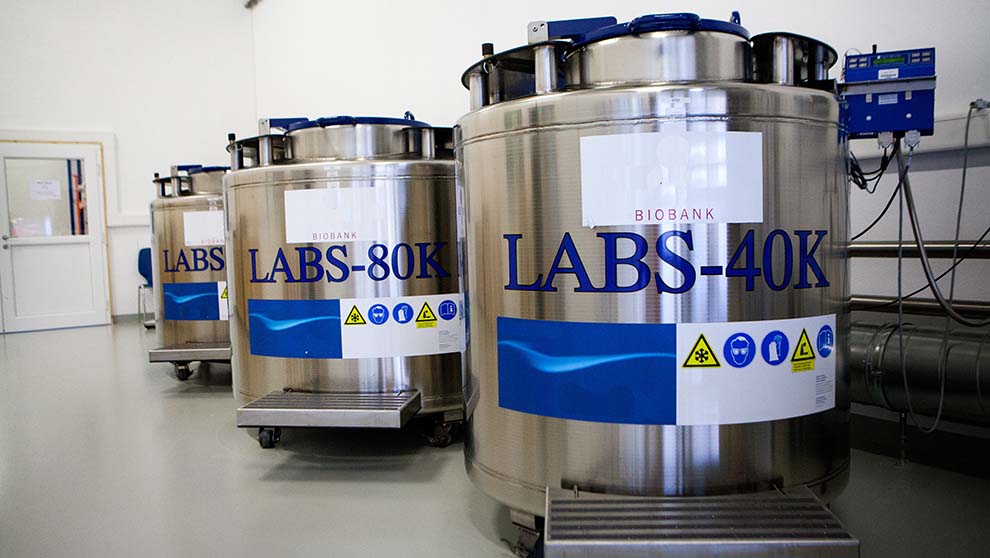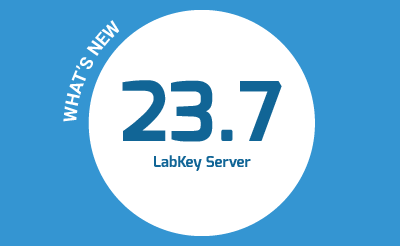Category: About LabKey
What is Sample Tracking?
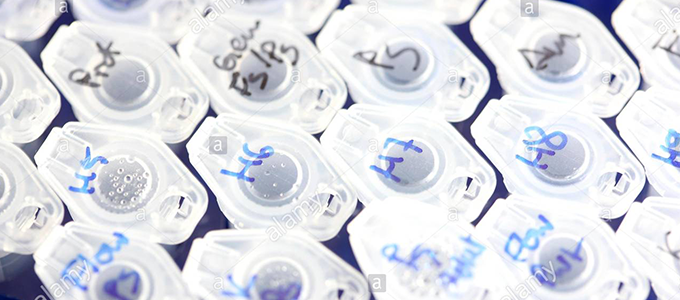 Sample tracking is knowing the “what, where and why” of your lab samples.
Sample tracking is knowing the “what, where and why” of your lab samples.
What is sample tracking? Let’s start with a common scenario. A post-doc from two years ago collected a few dozen samples that would be really valuable to re-analyze with your new lab toy. But where are those samples? You could consider trying to regenerate the samples rather than finding them in your freezer. But then you realize you don’t have that strain of mice anymore, so you go searching.
First, you go to their old notebooks and see if you can track them down. After searching in several notebooks, you find that they stored them in the -80C in a box called “My samples”. So, you look through your freezers to finally find the box, and see that they are labelled with a date (yay!) and a numeric value 1-40. You go back to the lab notebook (which one was it again?!) and map these numeric values to the information stored in the notebook.
The scenario above is a concise example of how the right sample tracking procedures and sample management software could save time and resources.
Click here to learn how Sample Manager can help your lab.
Sample Tracking in the Lab
Accurate and efficient sample tracking is an important function of all well-organized labs. In order to identify, use and understand the context of a sample after it’s been collected, lab staff should at a minimum collect and notate the following information:
- the properties of the sample (name, unique ID, where it was derived from, volume, etc.)
- the location of the sample
- any activities or assays that the sample has been a part of
- the current status of a sample at any given time
Many labs are now capturing this information electronically, whether it’s via a spreadsheet or with a sample management system. Thoughtfully designed systems and procedures are key to making sample tracking an easy and efficient process, however, designating resources upfront for these efforts can be difficult to prioritize for some labs.
Tracking Samples with LabKey Sample Manager
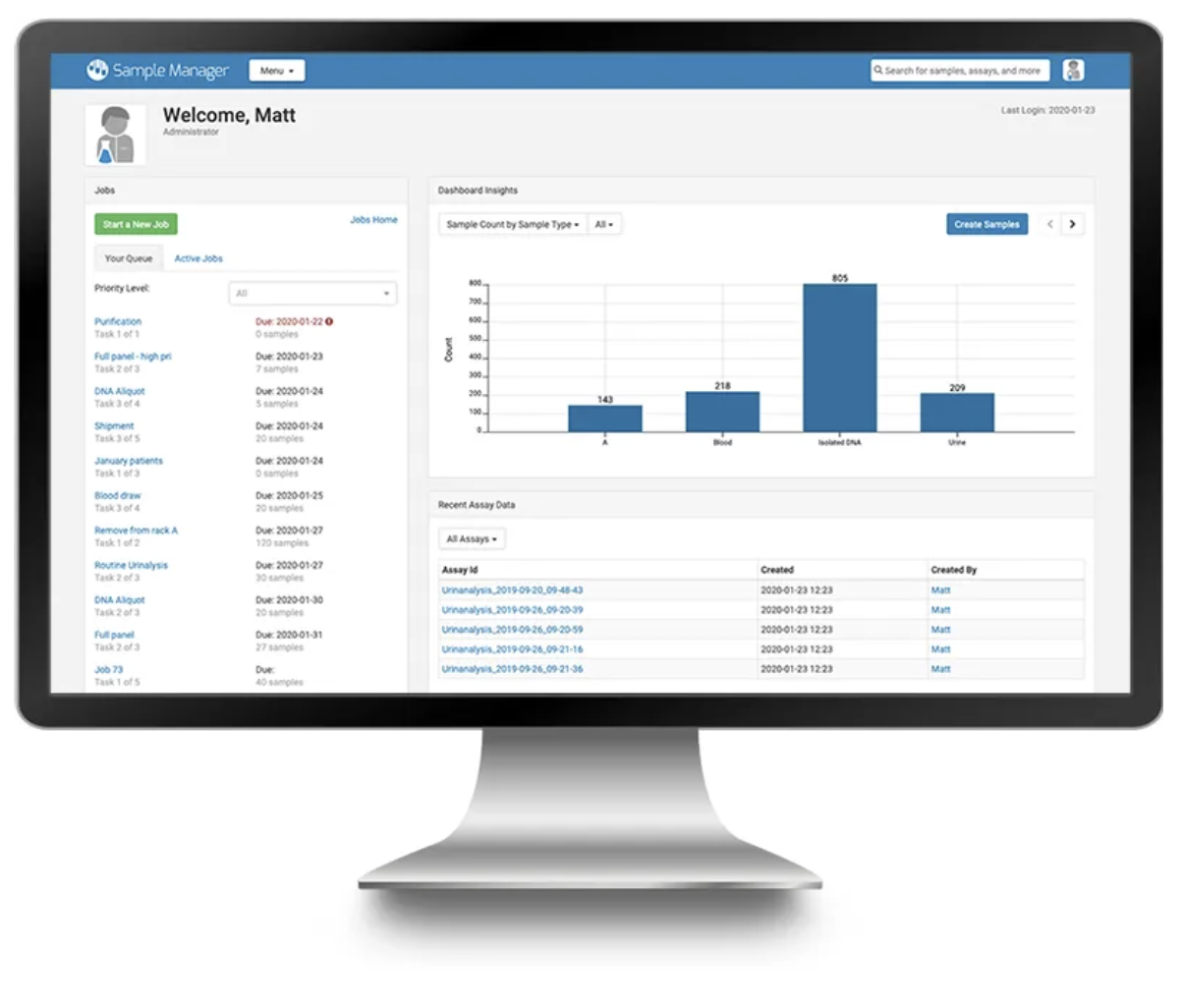 LabKey Sample Manager is an intuitively designed sample management application that brings ease and efficiency to sample tracking. The application has various features to assist in sample tracking including:
LabKey Sample Manager is an intuitively designed sample management application that brings ease and efficiency to sample tracking. The application has various features to assist in sample tracking including:
Sample Timeline – Track chain-of-custody and events for a samples such as assays performed, volume changes, and inclusion in workflow jobs.
Sample Sources – Assign sources to a sample to better understand the broader picture of the sample within the laboratory, experiment or study.
Sample Types – Organize samples by type and add data fields for that type to describe attributes of samples for easy tracking.
Freezer Management – Track the storage location of samples and freezer capacity.
Unique Sample IDs and Naming Patterns – Each sample in the system is required to have a unique name/id within its sample type. You can either choose the unique ID yourself or have it generated by the system using a naming pattern that can be customized by an administrator.
Tools for Tracking Sample Lineage – Sample Manager includes a lineage graph that provides a visual representation of the parentage of samples as well a lineage grid can be helpful when viewing lengthy lineages or derivation histories.
Click here to take a tour of Sample Manager!
Cool and Collected: Essentials of Lab Freezer Organization
Three Reasons Freezer Management Software is Vital
If you’ve worked in a lab, you’ve likely used some form of freezer management to manage your sample storage. For some labs, this may simply be a paper lab notebook where freezers, boxes, and sample locations are annotated. Others may periodically update an Excel file with samples stored in the freezer and place a print out of the spreadsheet on the freezer itself. However, for truly efficient and organized labs, nothing beats having freezer management software to manage your freezer capacity and sample inventory. Below are 3 key reasons why you need software to manage your lab freezer storage.
1. Your samples are precious and should be treated that way.
Samples can be one of the most precious things in the lab, sometimes they are even irreplaceable. The time spent collecting, processing, and collecting data from samples means they are valuable not only to your research but also to the cost efficiency of your lab. Misplacing and looking for lost samples can be a huge waste of time for laboratory staff and even more so if the samples are never found. Using freezer management software ensures that your freezers are kept organized and reduces the chances that you will misplace valuable samples.
2. Excel and paper-based freezer management can’t keep up with busy labs.
Although Excel and paper-based systems may be able to keep up with the needs of a very small lab, they are very difficult to keep updated with accurate information and definitely don’t meet the needs of larger or growing labs. Busy staff in the lab will need to manually/visually judge freezer capacity, update multiple sheets and samples when making simple changes, and have to manually keep track of sample volumes and freeze/thaw counts. This method of freezer management is highly prone to errors from day-to-day use not to mention during scheduled clean-outs and organization of the freezer.
3. Complete and accurate auditing is nearly impossible without freezer management software.
Auditing and organizing your samples is a much easier task with freezer management software. You’ll have a full record of all check-in/check-out events for samples, by which staff, and a full history of the location and movement of samples in the freezer. This level of completeness and accuracy is much more difficult to achieve using paper or excel. Freezer management software captures all of the information you need for a comprehensive audit of your freezer storage and samples.
Freezer Management with LabKey Sample Manager
With Sample Manager, we have introduced a sample-centric freezer management solution into the application. This means you can create samples, add metadata and lineage information, perform work and even upload assay data — all without having to use the freezer management tool. Of course, if you plan to store your samples, freezer management is there to help by:
- Managing your freezer with an end-to-end sample tracking system that stores the entire sample history and chain of custody in one place
- Providing a customizable, flexible structure to accurately reflects the physical freezers in your lab
- Tracking samples in and out of the freezer (freeze/thaw counts) and automatically calculating and tracking sample volumes
- Helping you to easily find samples in the freezer and move samples between freezers
- Tracking and maintaining full audit logs of the freezer and of the samples
The best way to encourage users to adopt a new system is by providing them with benefits that actually help them- save them time, make tasks simpler, etc. Additionally, when a system becomes the primary source of truth for team members, it becomes easier to adopt because that’s where the information lies. Click here to learn more about our freezer management solution.
Upgrade Your Freezer Management System Without the Pain
Migrating data from a freezer management system can be hard. So difficult in fact, that many labs continue to use an outdated system long after it is no longer serving their needs. Sometimes, the legacy system has even become a hindrance to sample management operations. However, this shouldn’t deter you from taking on the challenge of upgrading your freezer management software and reaping the rewards of improved organization and management of your lab samples. Below are a few tips for a painless switch to a new freezer management system.
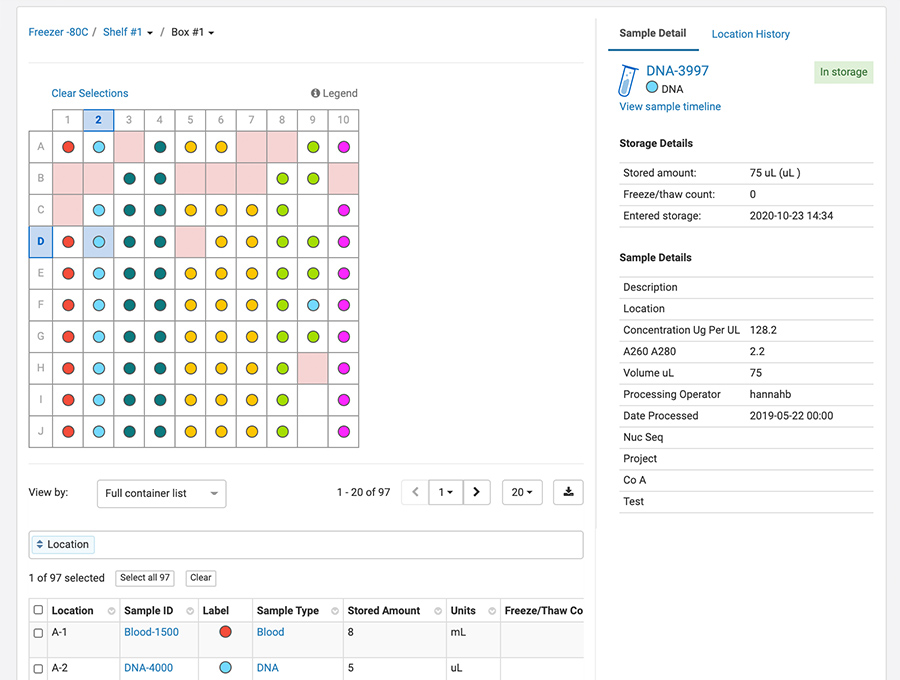 Plan and prepare for your new freezer management system.
Plan and prepare for your new freezer management system.
Develop a plan for migrating to your new system that includes a timetable for which freezer data will be migrated, and roles/responsibilities during the process. Make that your team is trained on the new system and that you are communicating clearly throughout the process.
Backup your legacy data.
Before anything, it’s important to have a backup of data for record-keeping and disaster recovery. During the migration process, this backup will serve as a record of your legacy system data- some of which may not transfer over to the new freezer management system. Create system-wide backups for recovery, but also human-readable backups for data mining if an unlikely event happens.
Determine what will be migrated.
Take this as an opportunity to clean up legacy data and items in the freezer. This might even be a good time to defrost and clean your freezers if they are not on a regular defrosting schedule. Focus on the essential samples and related data to keep your system and your freezers clutter-free. For each sample type, determine the list of fields exported from the legacy system and how they will map to the new system. Document data types, field validation (required fields or a specific range of values), and any other requirements such as relationships between samples and sources.
Utilize your resources – ask for help.
Many vendors offering freezer management system offer migration services, so ask for help! If the system you’re moving to doesn’t offer this, consider hiring a consultant or contractor to help if your team members are too busy or you need advice. When choosing a system, make sure to consider the support you will need to implement your new system.
LabKey Sample Manager provides:
- Easy, straightforward data import format to register your samples and their locations in a single step
- Unlimited user-defined fields allow teams to capture any data necessary
- Migration services and customer support when needed
Click Here to learn more and take a tour!
Exploring the Difference Between Biorepositories and Biobanks
Clinical Sample Tracking for Labs and Researchers
Clinical sample tracking helps scientists and research teams know where samples are in the receiving, storage, testing and analysis process. This allows researchers to quickly identify information regarding the patient/study participant, previous assay runs, derivative samples, storage location, history, and more.
When dealing with human-derived samples, tracking the chain of custody and storing sample-related data in a secure environment is vital. Unfortunately, many research groups are still relying on paper trails for clinical sample tracking due to the low cost and familiarity of the approach. These “paper solutions” are highly error-prone, difficult to scale, and difficult to adapt to increasing complexity in the lab. This can greatly reduce productivity, delay execution of a research study, and can pose regulatory compliance risks. For these reasons, selecting a sample management software designed for clinical sample tracking is critical for success.
When looking for a clinical sample tracking system, consider the following:
- Is clinical sample data being stored securely with the proper safeguards to ensure regulatory compliance?
LabKey Sample Manager offers CFR Part 11, HIPAA and FISMA compliant software and hosting, used by leading life science organizations and the FDA. This includes built-in methods to restrict PHI/PII data access, and e-Signing data, managing sensitive data in a secure way is easy and transparent. - Is the sample’s chain of custody captured in the system and easy to retrieve?
Not only does Sample Manager create audit-ready logs for all sample events, we have a unique Sample Timeline that allows users to easily browse a sample-centric chain of custody for auditing and troubleshooting. - Can you customize fields and add built-in validation to ensure correct data entry?
Sample Manager allows administrators to add validators to both numeric and text fields to ensure correct data entry. Quality Control tools allow assay data to be reviewed before it’s shared to ensure that only relevant data is displayed to teams. - Can the clinical sample tracking system provide built-in reporting capabilities that create custom reports unique to your lab’s needs?
LabKey has built-in reporting and charting tools to quickly assess the data, as well as many advanced tools such as built in R and SQL reporting, integrations with Tableau, Spotfire, etc. - Can I capture participant clinical data within the same tool to centralize my data?
LabKey has an extensive study module that integrates with our clinical sample tracking system that allows teams to capture all clinical data. We integrate with REDCap and Medidata RAVE as well. Our study publishing capabilities allow teams to share information with collaborators in a secure way including date-shifted and de-identified data.
